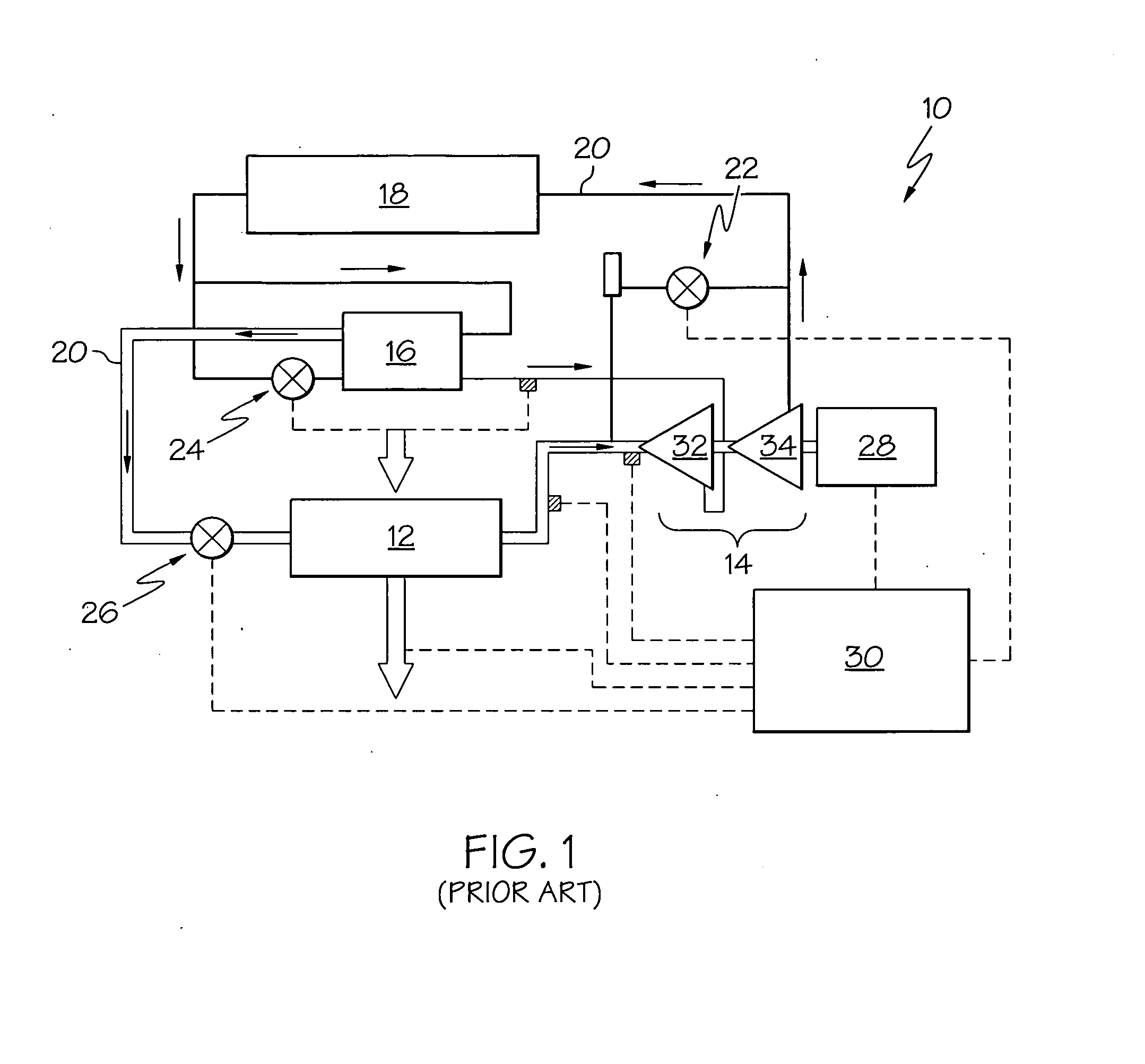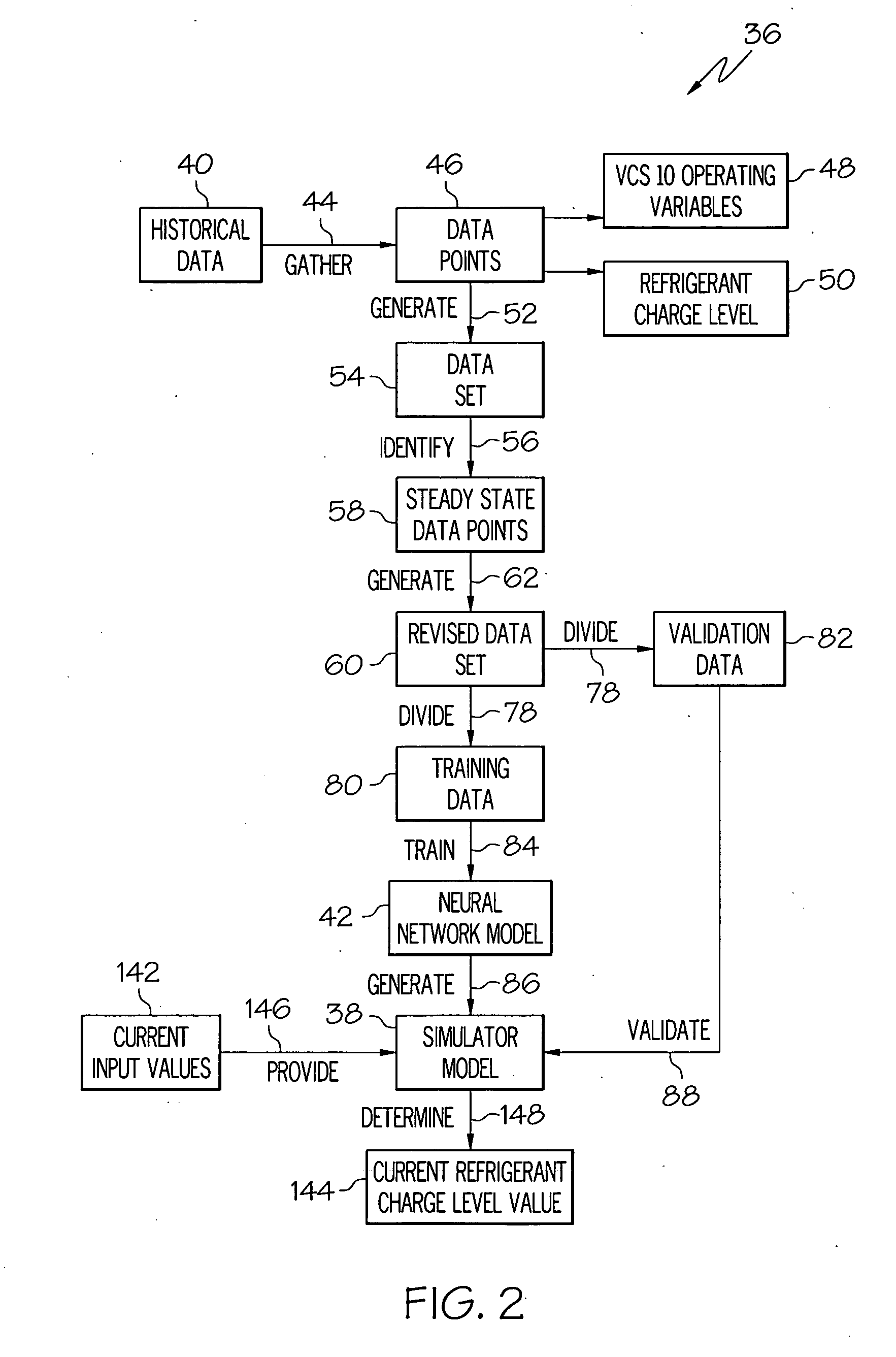Neural network based refrigerant charge detection algorithm for vapor compression systems
a technology of vapor compression system and refrigerant charge detection, applied in the field of aircraft vapor compression system, can solve the problems of reducing the performance of vcs system, difficult refrigerant charge level determination, and typical complex vcs operation
- Summary
- Abstract
- Description
- Claims
- Application Information
AI Technical Summary
Benefits of technology
Problems solved by technology
Method used
Image
Examples
Embodiment Construction
[0024]The following detailed description of the invention is merely exemplary in nature and is not intended to limit the invention or the application and uses of the invention. Furthermore, there is no intention to be bound by any theory presented in the preceding background of the invention or the following detailed description of the invention.
[0025]FIG. 1 depicts an embodiment of a known vapor compression system (VCS) 10 for aircraft. The depicted VCS 10 has an evaporator 12, a compressor 14, a flash subcooler 16, a condenser 18, refrigerant lines 20, a surge valve 22, a thermal expansion valve 24, and a refrigerant expansion valve 26. The VCS 10 components are operated by a motor 28 and a controller 30.
[0026]In conditions requiring maximum cooling, refrigerant enters the evaporator 12 as a low-temperature mixture of liquid and vapor, and flows through the evaporator 12. In this section of the VCS 10, which is generally referred to as the low-pressure side, the pressure remains e...
PUM
| Property | Measurement | Unit |
|---|---|---|
| temperature | aaaaa | aaaaa |
| outlet temperature | aaaaa | aaaaa |
| inlet temperature | aaaaa | aaaaa |
Abstract
Description
Claims
Application Information
 Login to View More
Login to View More - R&D
- Intellectual Property
- Life Sciences
- Materials
- Tech Scout
- Unparalleled Data Quality
- Higher Quality Content
- 60% Fewer Hallucinations
Browse by: Latest US Patents, China's latest patents, Technical Efficacy Thesaurus, Application Domain, Technology Topic, Popular Technical Reports.
© 2025 PatSnap. All rights reserved.Legal|Privacy policy|Modern Slavery Act Transparency Statement|Sitemap|About US| Contact US: help@patsnap.com



